The journey of the Pollinator Pocket began in August 2021- on a walk to Christie Pitts with my kids, we took the photo below.
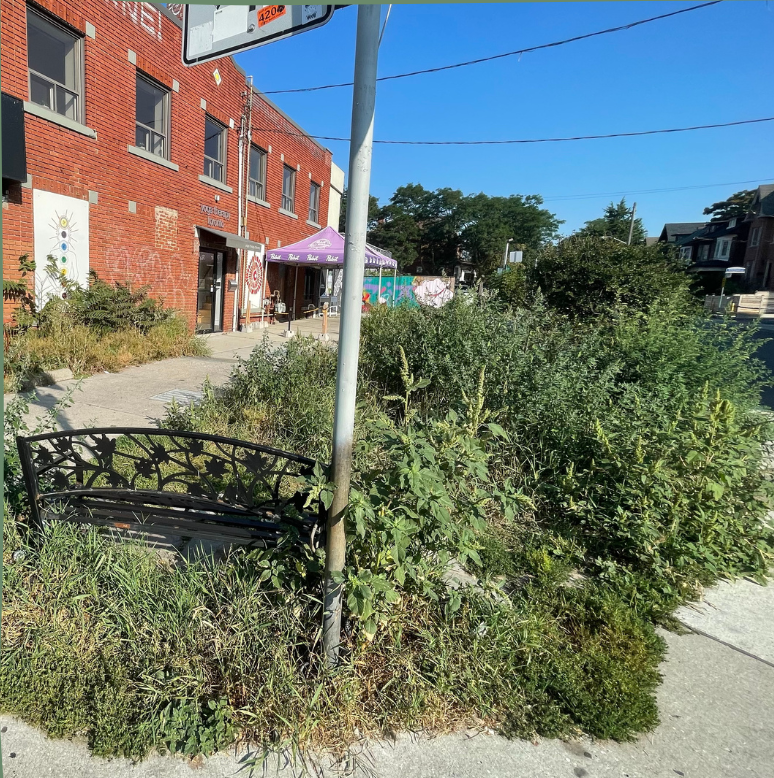
This patch on Bloor Street was filled with shoulder high weeds and we thought it would be a good location for a pollinator habitat. We received approval from the adjacent business owner to plant a pollinator garden and got to work.
Here's how we did it.
Once I had approval, in October and November of 2021 I began by taking out all the large weeds and bagged them for city pick up. I took the grass down as low as I could and raked off the loose debris and garbage before winter.
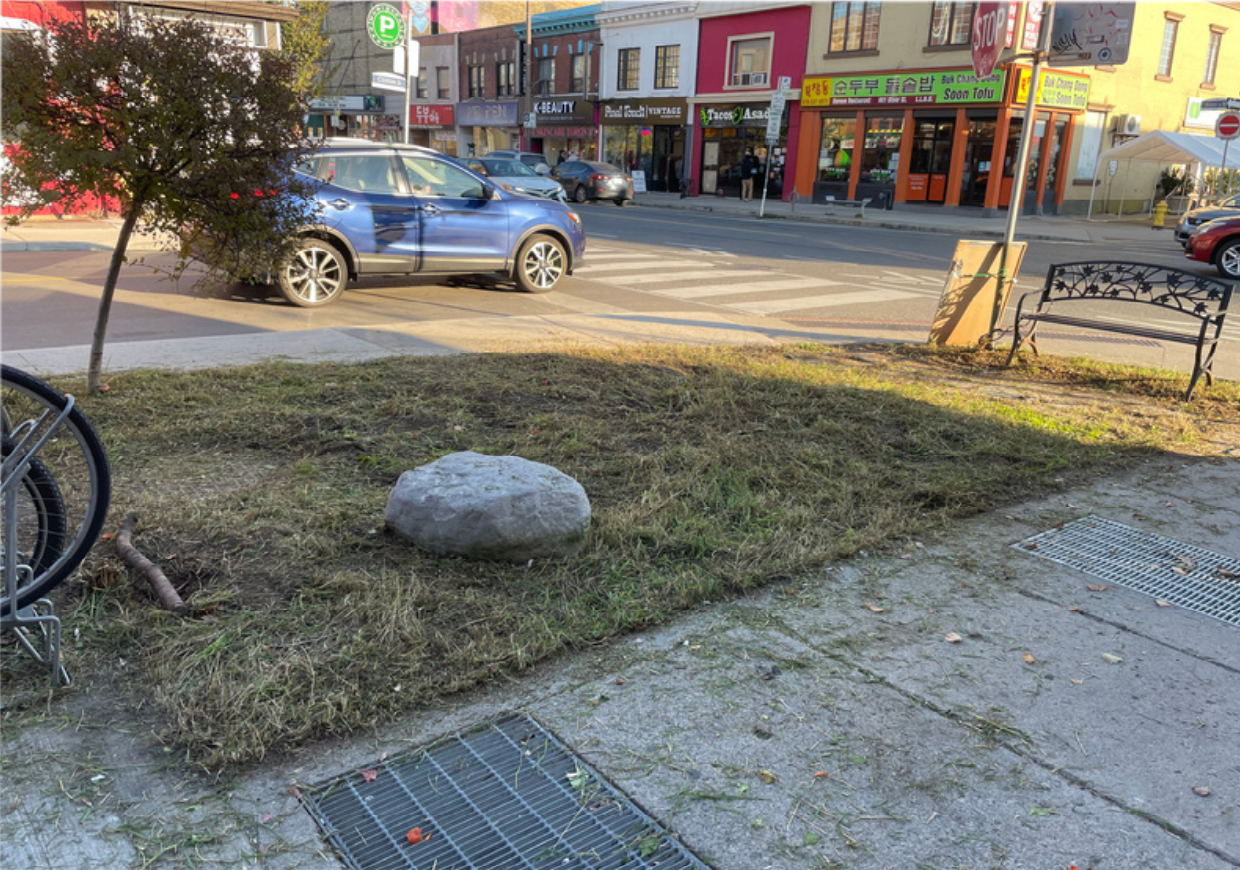
In mid winter, I moved seeds that I had cold moist stratified in my fridge and placed them under a grow light. I started Rudbeckia hirta and Ceoreopsis lancelata in March as well as the Dahlias that would be planted on the perimeter of the garden.
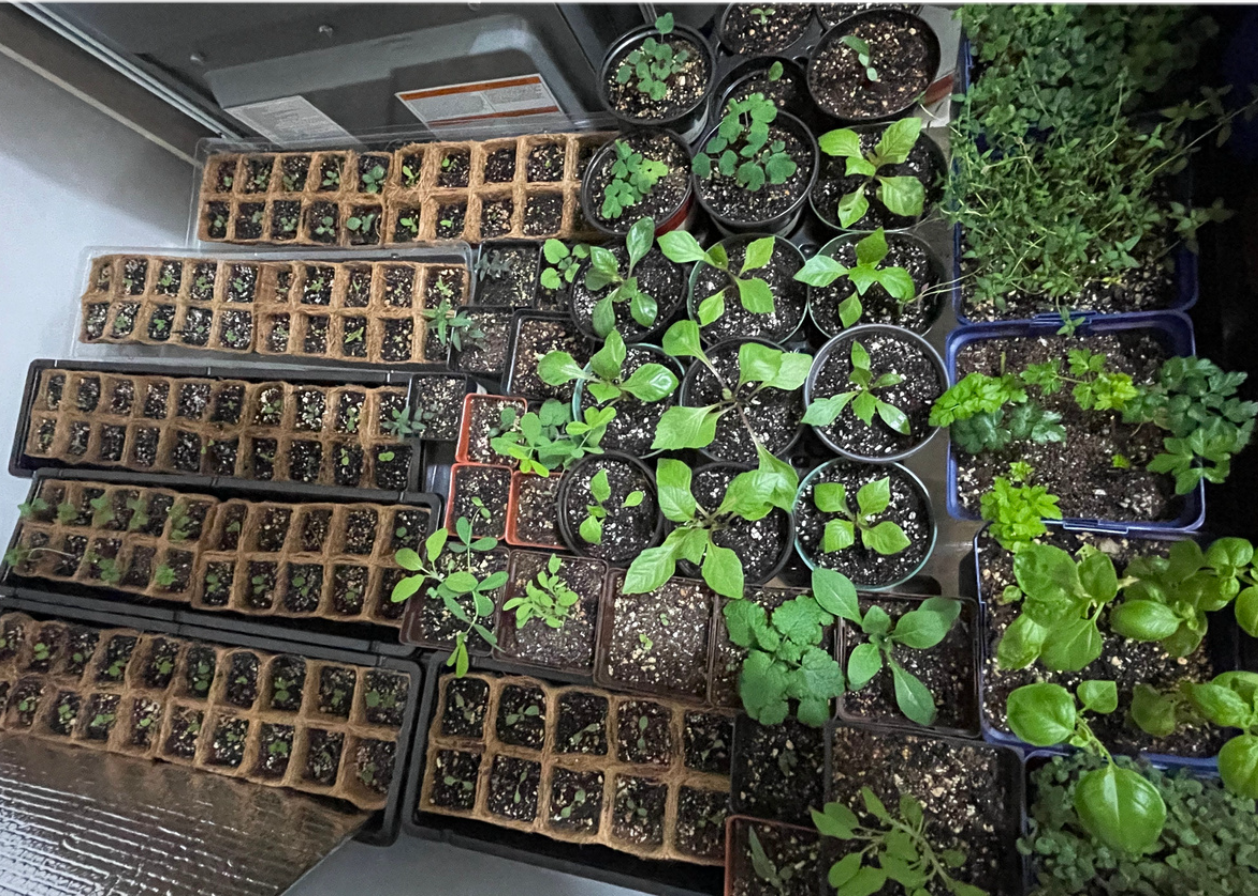
In April of 2022, once the ground thawed, we started digging to remove the top layer of unwanted roots and garbage . We mulched the areas we cleared as we went along. I began hardening off seedlings in preparation for planting.
We had a warm spring and no frost in the forecast so I thought it was the right time to plant the garden. On May 5th, I went over with the plants in my wheelbarrow and planted the garden.I visited the garden daily through May and, with little rain, I was bringing watering jugs from home attached to my wheelbarrow.
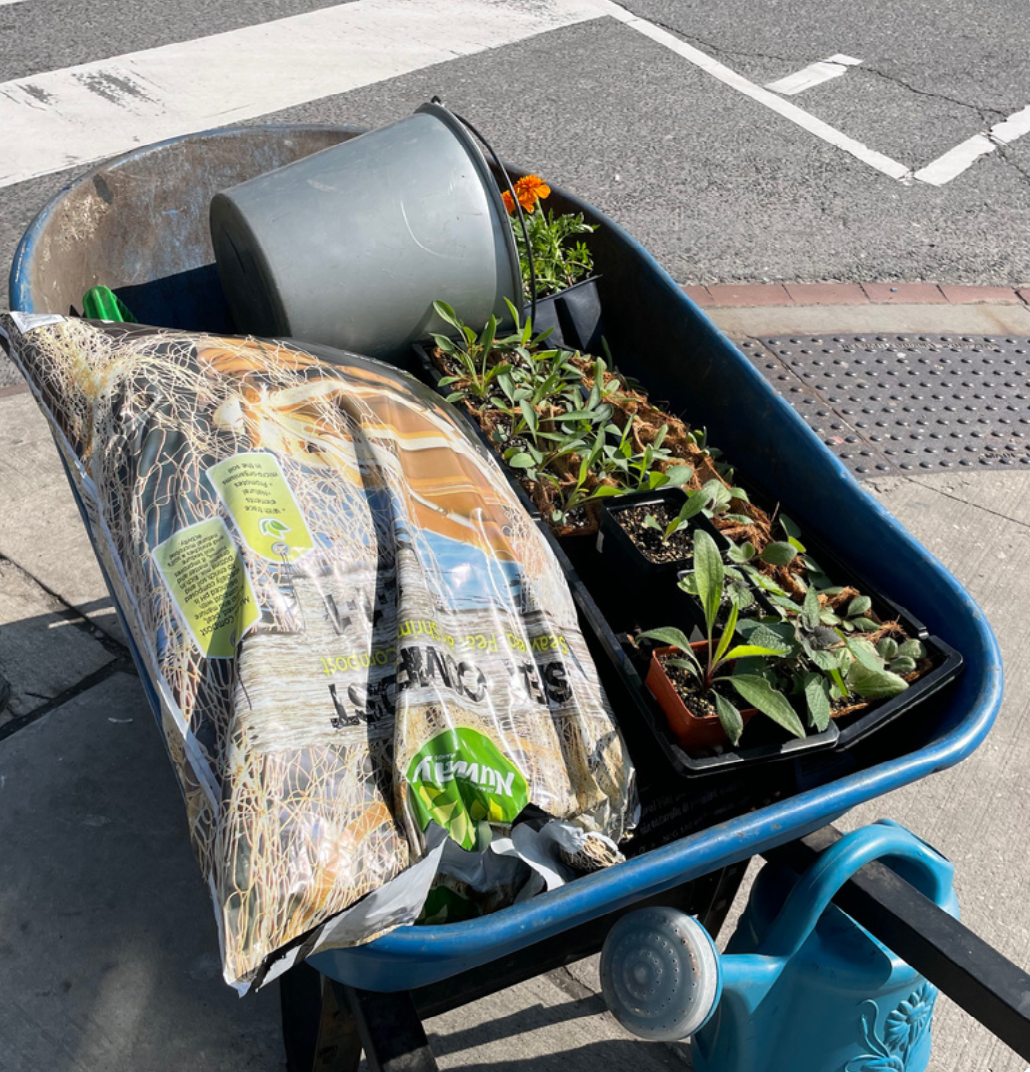
Once past the last frost date, I planted some annuals (geraniums, marigolds, and the Dahlias I grew) around the outside of the fence area. At this time, I noticed the plants that were already planted were being nibble at -- I eventually witnessed the starlings who were nesting nearby taking leaves for their nests.
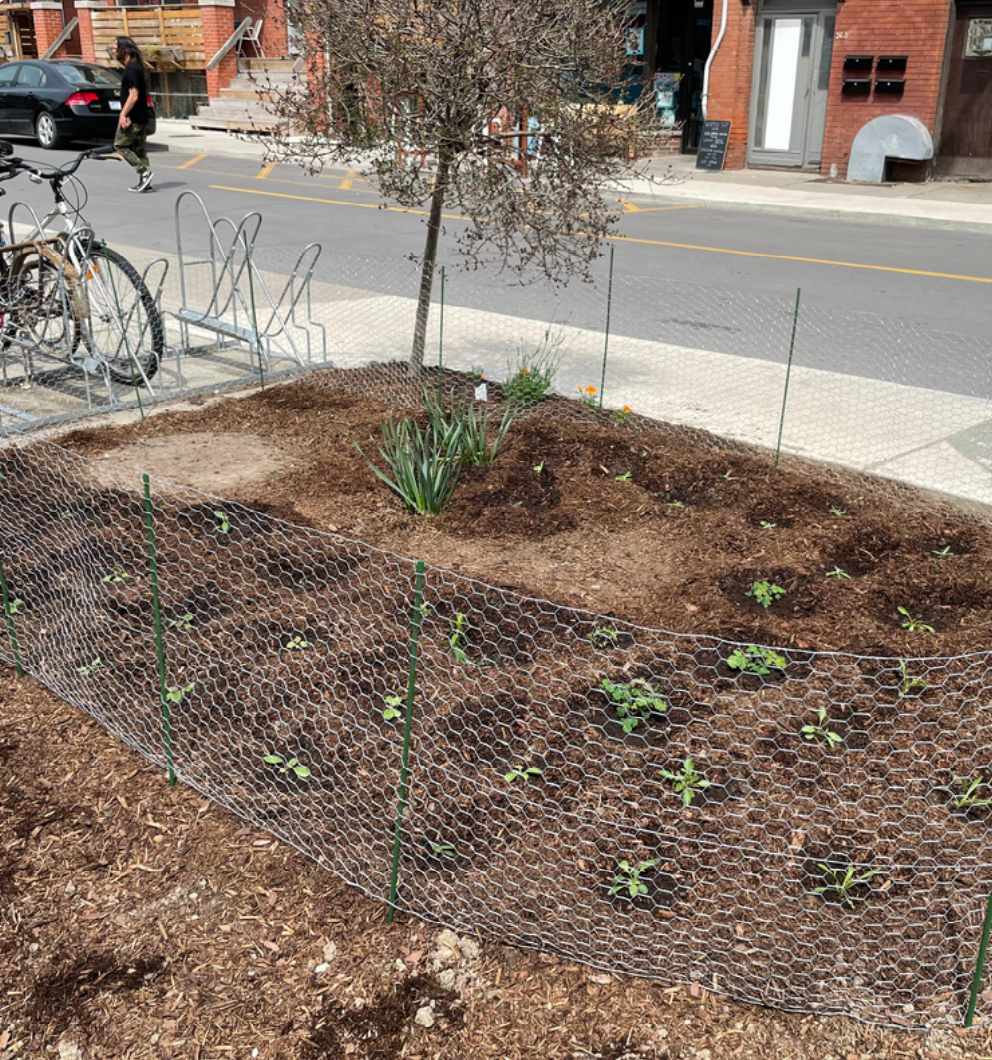
In early June the starlings moved from their nests and the plants that survived could grow. To fill the gaps, I had extra seedlings from outdoor stratifications, acquired a few plants (Stiff leaved goldenrod, butterfly milkweed) from the North American Native Plant Society sale, and some neighbours brought some plants from division (purple coneflower, golden alexanders, wild strawberries). At this time, we also made a sign with some art drawn by my daughter.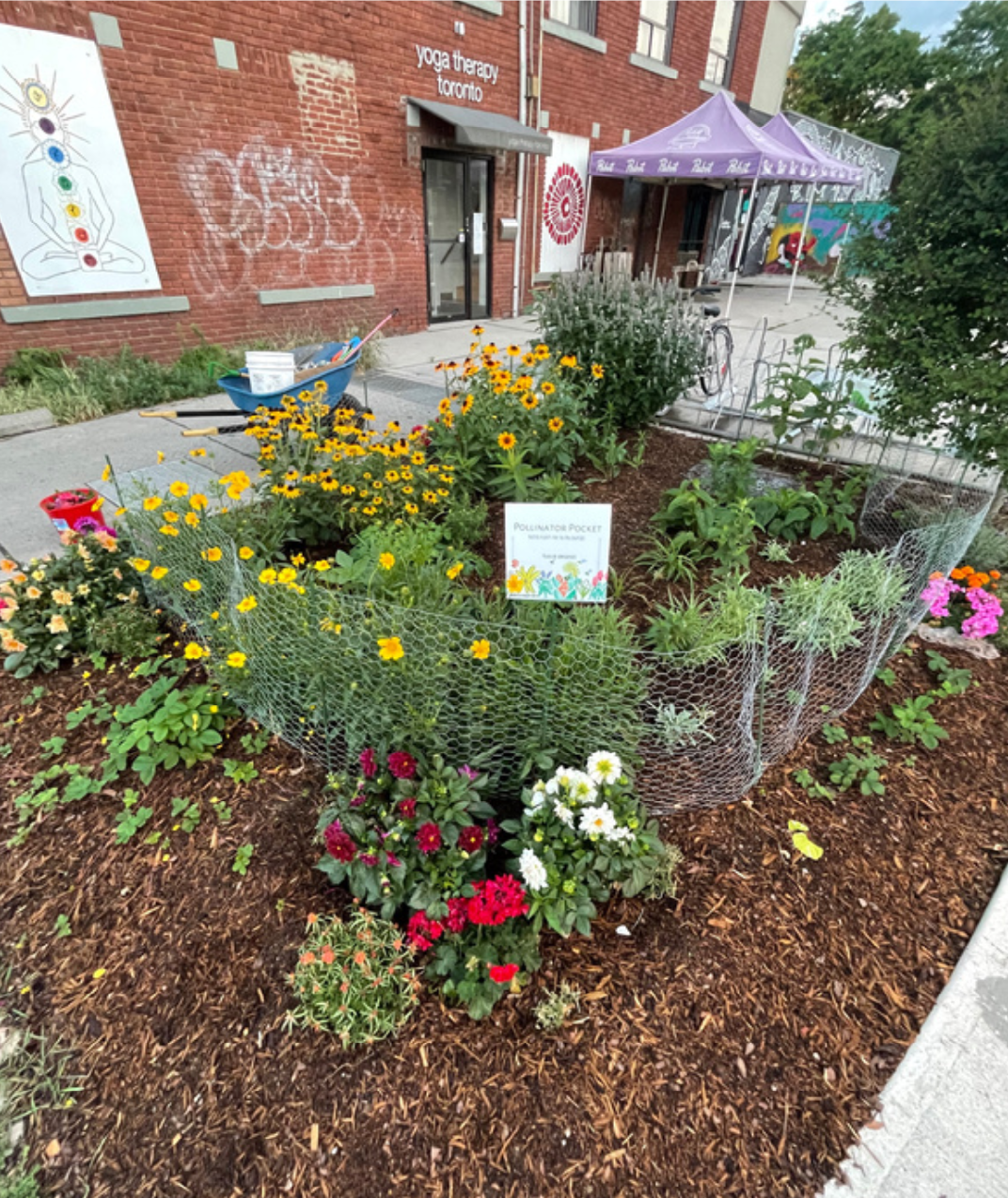
It was very dry through the month of June so I was watering daily. I continued to add a few things to the garden - planting Prairie Smoke, Little Blue Stem, Grey Golden Rod, Swamp Milkweed. Started to see Lanceleaf blooms towards the end of June.
Lots of blooms started to pop up in July: Anise Hyssop, Lanceleaf Coreopsis, Black-eyed Susan's. Weed growth from seed bank in the soil slowed significantly. However, the amount of garbage rose with increased traffic along Bloor Street. Had a few painted lady butterfly caterpillar show up in the pearly everlastings.
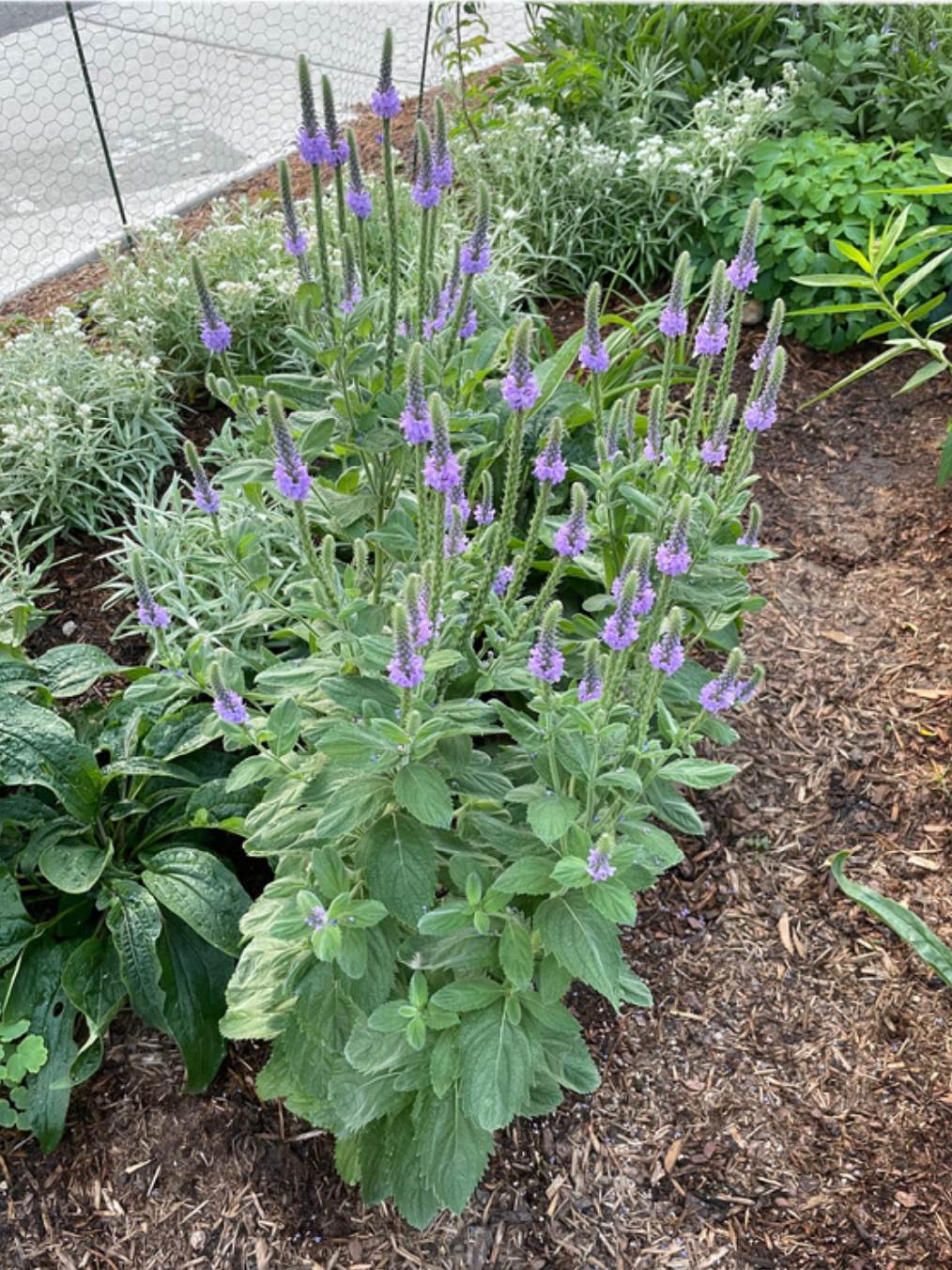
New bloomers in August included Wild Bergamot, Blue and Hoary Vervains, Butterfly and Swamp Milkweed, Mountain Mint.
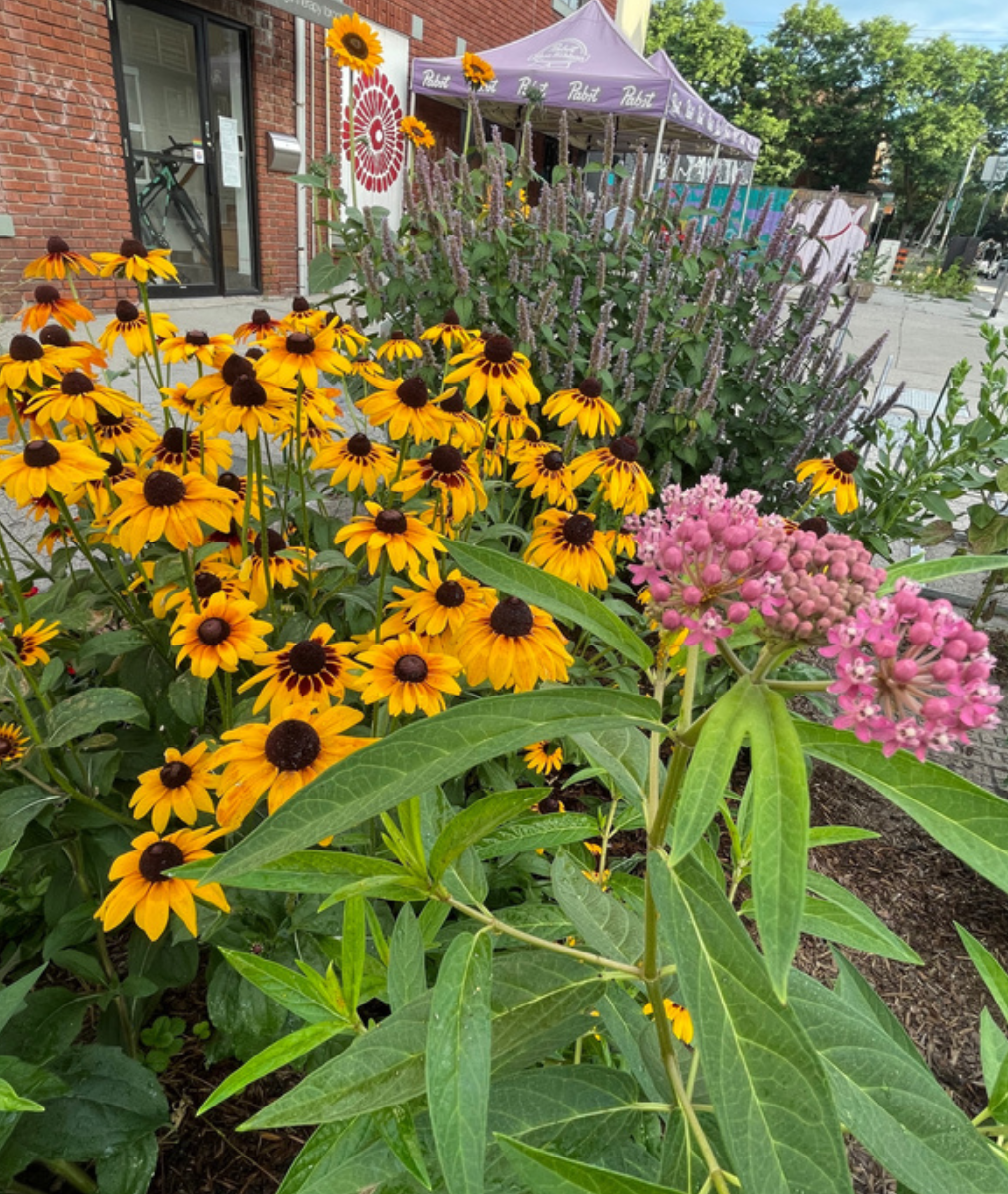
The garden continued to grow and fill in through September. New blooms included Stiff leaved goldenrod and New England Aster.
Challenges
Although the project was a success, it was met with a few challenges and set backs. I found it challenging at first to connect with volunteers. It took some time, but I was able to do some planting and weeding with volunteers over the summer.
The starlings using the garden as nesting material in the spring was a real set back. I lost about 60% of what I had originally planted. I had overwintered seeds outdoors, so I had back up seedlings to fill in. I found that some of the young plants, for example, the blue vervain, grew much fuller having been pruned to the ground by the starlings.
After the area had been cleared off, I put in a chicken wise fence around where the native plants would be planted in order to protect them from people and pets. The fencing worked great and there were not too many issues inside that area. I left the outside perimeter with mostly annuals in case they suffered damage. One geranium was lost to theft and a Dahlia was killed by having an unknown substance poured on it. As part of my daily chores I would sweep up off the sidewalk and re-mulch if needed to keep the perimeter looking tidy. Overall, the challenges provided key lessons for the next planting season and added to the unique journey and story of the Pollinator Pocket.
Anise Hyssop, Stiff Goldenrod, New England Aster, Golden Alexander, Black Eyed Susan, Grey Goldenrod, Swamp Milkweed, Pearly Everlasting, Canada Wild Rye, Little Bluestem, Spotted Beebalm, Dense Blazing Star, Lanceleaf Coreopsis, Foxglove Beardtongue, Butterfly Milkweed, Hairy Mountain Mint, Hoary Vervain, Blue Vervain, Wild Columbine, Purple Coneflower, Pale Purple Coneflower, Wild Strawberry, Tall Meadow Rue, Smooth Aster.
- Adam